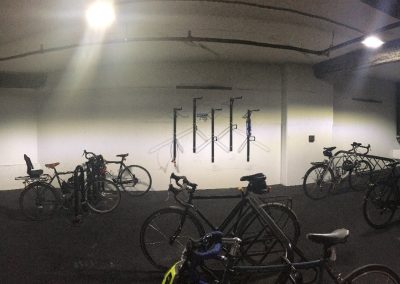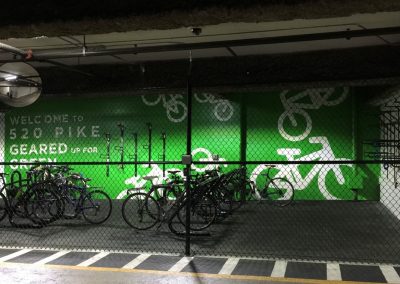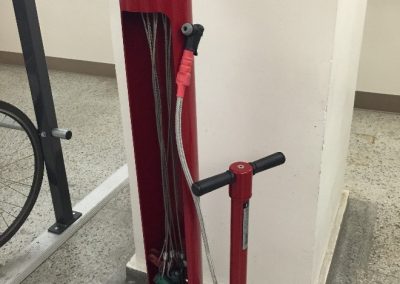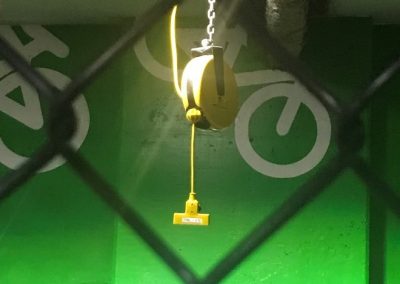On March 4, 2021, Commute Seattle hosted the Parking Management Seminar featuring experts on workplace EV charging, bicycle parking, and the Transportation Management Program policy. Our guest speaker, Allison Delong, spoke to how to put it all to practice as a property manager at a busy office and retail location in downtown Seattle.
Allison Delong is a General Manager for Tishman Speyer and has managed 520 Pike Tower in downtown Seattle since 1999. Seattle born and raised, Allison has been riding Metro busses since her teenage years and has used LINK light rail to commute to work since it began operating. She used to own a Prius and expects that her next car will be an EV!
520 Pike Tower is in the heart of Downtown Seattle and was built in 1983. At the time, it was the cusp of the Transportation Management Program, which is a policy that affects new development through their Master Use Permit process. 520 Pike Tower’s commitment outlined fundamental strategies like priority parking and discounted parking rates for carpools. Property Managers like Allison wear many hats. One of which is to work to implement the transportation management program, while also keep the building’s facilities fresh and modern for tenants.
Allison: In 1983 6th & Pike where 520 Pike sits, wasn’t much; but Westlake Center opened in 1988 and US Bank Center in about 1989, moving the center of town from the courthouse area up toward Pike Street. Some folks may not know that the existing light rail tunnel started as a bus tunnel only. It opened in 1990 and we were lucky to be a block from the Westlake station. Light rail opened using the same tunnel in 2009 and further made 520 Pike Tower the center of the Seattle universe.
When I began here in 1999 we were pretty much the only building in town with a gym and showers and light rail didn’t exist yet. We had a very small bike parking area in our garage and offered carpool parking as required by our Transportation Management Plan. Around 2015-2018 other buildings started to add gyms and we expanded ours to keep pace. We gradually added more bike parking to meet tenant demand but I remember weighing the costs versus benefits of giving up parking stalls. We’ve been LEED Gold for at least 10 years, and our high public transportation usage by tenants, as well as bike cage, shower and EV chargers have helped us earn LEED credits.
Olivia: So there have been a great many changes to keep things fresh and modern. But I assume routine maintenance like paint an:d repaving also happens on a regular basis. Show us how a little paint can make a tenant amenity more visible.
Allison:
How You Can Help
As a property manager you can help a building be welcoming of all modes of travel and educate tenants on their transportation options. Reach out to Commute Seattle for a free consultation to discuss an upcoming educational event or mobility fair to keep the conversation going, and keep Seattle moving.
Stay In Touch
Subscribe to our monthly newsletter or check out our upcoming events.






